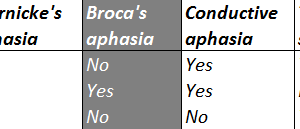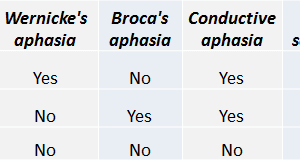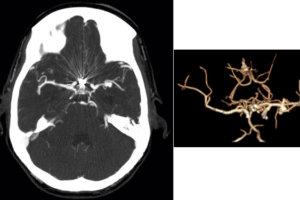
Patients with receptive aphasia can speak clearly (fluently) but cannot understand what others say and have difficulty putting together meaningful sentences.
On exam this manifests as:
- Patients do not follow commands because they cannot understand the command.
- Some patients have “word salad,” in which speech is produced clearly but consists of a string of non-sensical words strung together.
Receptive aphasia is most commonly caused by lesions of the posterior (inferior) branch of the left MCA. There are specific subtypes of receptive aphasia distinguished by whether or not a patient can repeat a phrase spoken to them.
Lesions of Wernicke’s area (superior temporal gyrus) cause a specific type of receptive aphasia, known as Wernicke’s aphasi. This is characterized by a lack of comprehension of speech (like other receptive aphasias) plus an inability to repeat a phrase.
Lesions of areas of the sensory cortex around Wernicke’s area (but sparing it) cause receptive aphasia in which a patient can repeat a phrase spoken to them. This is a transcortical sensory aphasia.
Receptive aphasias are often “frustrating to the physician” because the patient cannot understand what they are being asked to do. This is to be distinguished from expressive aphasias, in which the patient is frustrated because they cannot say what the want to say.
The aphasias can be classified by a patient’s response to three screening questions; the receptive aphasias are highlighted in the chart below.





